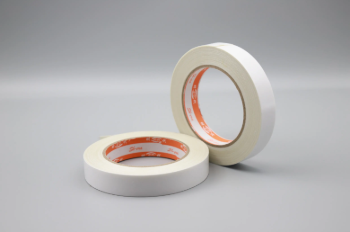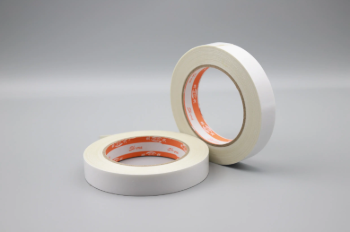
In the vast lexicon of adhesive solutions, few products possess the understated versatility and pervasive utility of double coated tape. Often operating as an unseen linchpin in myriad assemblies and installations, this adhesive marvel is characterized by its unique architecture: a carrier material, typically a film, foam, or non-woven fabric, imbued on both of its obverse and reverse surfaces with a pressure-sensitive adhesive (PSA). This dual-sided adhesive capability transforms it into an indispensable tool across a kaleidoscopic array of industries, offering an elegant, often superior, alternative to traditional fastening methods such as screws, rivets, liquid glues, or welding. At SHANGHAI NEWERA VISCID PRODUCTS CO., LTD, we routinely observe the transformative impact of this adhesive technology. This discourse aims to illuminate the multifaceted applications of double coated tape, delve into its operational nuances, and address common queries regarding its adhesive efficacy.
The Ingenious Construct: What is Double Coated Tape?
At its core, double coated tape is a sophisticated composite material engineered for bilateral adhesion. Unlike single-sided tapes that adhere to one surface and present a non-adhesive backing, double coated tapes are designed to create a bonding interface between two distinct substrates. The central element, known as the carrier, provides dimensional stability and can be tailored to specific performance characteristics. Common carrier materials include:
• Film (e.g., PET, PVC): Offers high tensile strength, dimensional stability, and often transparency. Ideal for applications requiring thin, strong bonds.
• Foam (e.g., acrylic, polyethylene, urethane): Provides excellent conformability to irregular surfaces, damping properties, and gap-filling capabilities. Crucial for applications requiring shock absorption or sealing.
• Non-woven (e.g., tissue, fabric): Offers flexibility and good conformability, often used for general-purpose bonding.
• Without a Carrier (Transfer Tapes): These are essentially pure adhesive films, often with a release liner on both sides, designed to transfer a layer of adhesive directly onto a surface. They are exceptionally thin and conformable.
Each side of this carrier is coated with a pressure-sensitive adhesive, chosen for its specific properties—be it high tack, shear strength, temperature resistance, or removability. A release liner, typically siliconized paper or film, protects one or both adhesive surfaces until application, ensuring the tape's integrity and ease of handling. This intricate design empowers double coated tape to facilitate invisible bonds, streamline assembly processes, and enhance the aesthetic appeal of finished products by eliminating visible fasteners.
The Multifaceted Applications: What is Double Coated Tape Used For?
The utility of double coated tape extends far beyond simple affixation. Its ability to create strong, durable, yet often flexible bonds makes it a preferred solution in countless scenarios.
1. Mounting and General Assembly: Perhaps the most ubiquitous application, double coated tape excels at mounting objects to surfaces where a discreet, strong bond is desired. From securing decorative trim and emblems in automotive interiors to affixing mirrors and wall panels in architectural settings, its versatility is unmatched. For general-purpose bonding, such as in crafting or light industrial assembly, a reliable "double-sided gum tape" provides robust adhesion for a multitude of materials. This type of tape often features a balanced adhesive system, offering good initial tack and long-term holding power.


2. Flooring and Carpet Installation: The ephemeral nature of traditional carpet adhesives, coupled with their often noxious volatile organic compounds (VOCs), has spurred the adoption of specialized double coated tapes for flooring. Products like a "strong sticky no residual double-sided carpet tape" are engineered to provide a tenacious grip on various subfloors while ensuring clean, residue-free removal when the carpet needs replacing. This prevents damage to the underlying surface and simplifies future renovations, a significant advantage in both residential and commercial environments. The tape's ability to withstand foot traffic and temperature fluctuations without delaminating is paramount in these applications.
3. Automotive and Electronics Industries: In the demanding automotive sector, double coated tapes are indispensable for bonding components that require vibration damping, sound insulation, or precise alignment. They are used for attaching interior trim, exterior moldings, wiring harnesses, and even for bonding structural elements. Their ability to conform to irregular surfaces and distribute stress evenly across a bond line contributes to enhanced vehicle durability and reduced noise, vibration, and harshness (NVH).
Within the electronics industry, where miniaturization and precision are paramount, double coated tapes facilitate the assembly of delicate components. They are used for securing LCD screens, batteries, flex circuits, and heat sinks in smartphones, tablets, and other electronic devices. Their thin profiles and excellent dielectric properties make them ideal for these intricate applications, ensuring both mechanical stability and electrical insulation where necessary.
4. Signage, Displays, and Point-of-Sale Materials: For the creation of eye-catching signage and promotional displays, double coated tape offers an invisible yet formidable bond. It allows for the seamless attachment of graphics, dimensional letters, and structural components, creating a clean, professional aesthetic without visible fasteners. Its use in point-of-sale materials ensures that displays remain intact and presentable, even in high-traffic retail environments.
5. Crafts, DIY, and Home Improvement: For the amateur artisan and the seasoned DIY enthusiast alike, double coated tape is a veritable boon. It simplifies tasks ranging from scrapbooking and photo mounting to securing light fixtures and organizing cables. Its ease of use and clean application make it a preferred choice for projects where precision and a neat finish are desired without the mess of liquid glues.
6. Specialty Applications: The Cutting Edge of Adhesion: Beyond general utility, specialized double coated tapes cater to niche, high-performance requirements.
• Double-Sided Filament Tape: For applications demanding extraordinary tensile strength and shear resistance, such as the "double-sided filament tape for door and window sealing strip bonding" filament-reinforced double coated tapes are employed. The embedded fiberglass filaments provide immense strength, making them ideal for bonding heavy weatherstripping, window seals, or other components subjected to significant stress and movement. This type of tape ensures a robust, long-lasting bond even in dynamic environments.

• Nano Tape (Reusable/Washable): A relatively recent innovation, "magic nano tape reviews" highlights the emergence of reusable, washable double-sided tapes. These tapes leverage advanced adhesive formulations, often based on acrylics with microscopic suction properties, to provide a strong, temporary bond that can be removed without residue, washed to restore tack, and reused multiple times. They are perfect for hanging lightweight items, securing rugs, or temporary mounting where flexibility and non-permanence are key.

Navigating Adhesion Challenges: What Will Double-Sided Tape Not Stick To?
While double coated tape is remarkably versatile, it is not a panacea for all bonding challenges. The efficacy of any pressure-sensitive adhesive is contingent upon the nature of the substratum, surface preparation, and environmental conditions. Certain materials and situations present significant hurdles to optimal adhesion:
1. Low Surface Energy (LSE) Materials: This is arguably the most common nemesis for PSAs. LSE materials, such as polyethylene (PE), polypropylene (PP), Teflon (PTFE), and certain silicones, have molecular surfaces that resist wetting by adhesives. The adhesive cannot "flow" into the microscopic irregularities of the surface, resulting in a weak, unreliable bond. Specialized LSE tapes with aggressive acrylic adhesives are designed to overcome this, but standard double coated tapes will struggle.
2. Heavily Textured or Porous Surfaces: Surfaces with significant texture (e.g., rough concrete, untreated wood, certain fabrics) or high porosity (e.g., unsealed plaster, brick) reduce the effective contact area between the adhesive and the substratum. The adhesive cannot adequately fill the voids, leading to a diminished bond strength. For such surfaces, mechanical fasteners or specific gap-filling adhesives are often more appropriate.
3. Contaminated Surfaces: Any form of surface contamination—dust, dirt, grease, oil, mold release agents, or even fingerprints—will act as a barrier between the adhesive and the substratum. This prevents the adhesive from making intimate contact and forming a strong bond. Thorough surface preparation, including cleaning with appropriate solvents, is paramount for optimal adhesion.
4. Highly Flexible or Stretchy Materials (Without Proper Tape Properties): While some double coated tapes are designed for flexibility, attempting to bond two highly elastic materials with a rigid tape can lead to delamination under stress. The tape may not be able to accommodate the differential movement or stretching, causing the bond to fail. Conversely, a highly flexible tape might not provide sufficient shear strength for rigid materials.
5. Extreme Temperatures and Humidity: Most PSAs have an optimal temperature range for application and service. Extremely low temperatures can cause the adhesive to become brittle and lose tack, while excessively high temperatures can soften it, leading to creep or bond failure. High humidity can also compromise water-sensitive adhesives or cause condensation on surfaces, hindering initial tack.
6. Surfaces with Loose or Flaking Coatings: If the surface itself is unstable—for instance, peeling paint, crumbling plaster, or a delaminating veneer—the tape will only adhere to the loose layer, not the underlying stable substratum. The bond will be as strong as the weakest link, inevitably leading to failure.
Conclusion: The Invisible Architect of Modern Assembly
Double coated tape, with its ingenious dual-sided adhesive design, stands as a testament to the continuous evolution of adhesive technology. From securing the intricate components of consumer electronics to ensuring the steadfastness of industrial assemblies and providing elegant solutions for interior design, its applications are as diverse as they are critical. While understanding its limitations, particularly concerning low surface energy materials and surface contamination, is vital for successful implementation, its inherent strengths—invisible bonding, stress distribution, vibration damping, and ease of application—make it an indispensable tool. At SHANGHAI NEWERA VISCID PRODUCTS CO., LTD, we champion the power of precision adhesion, offering a curated selection of double coated tapes, including specialized solutions for carpet installation, robust filament tapes for demanding applications, and innovative reusable nano tapes, all designed to meet the exacting demands of modern industry and everyday life.
Post time: May-22-2025




